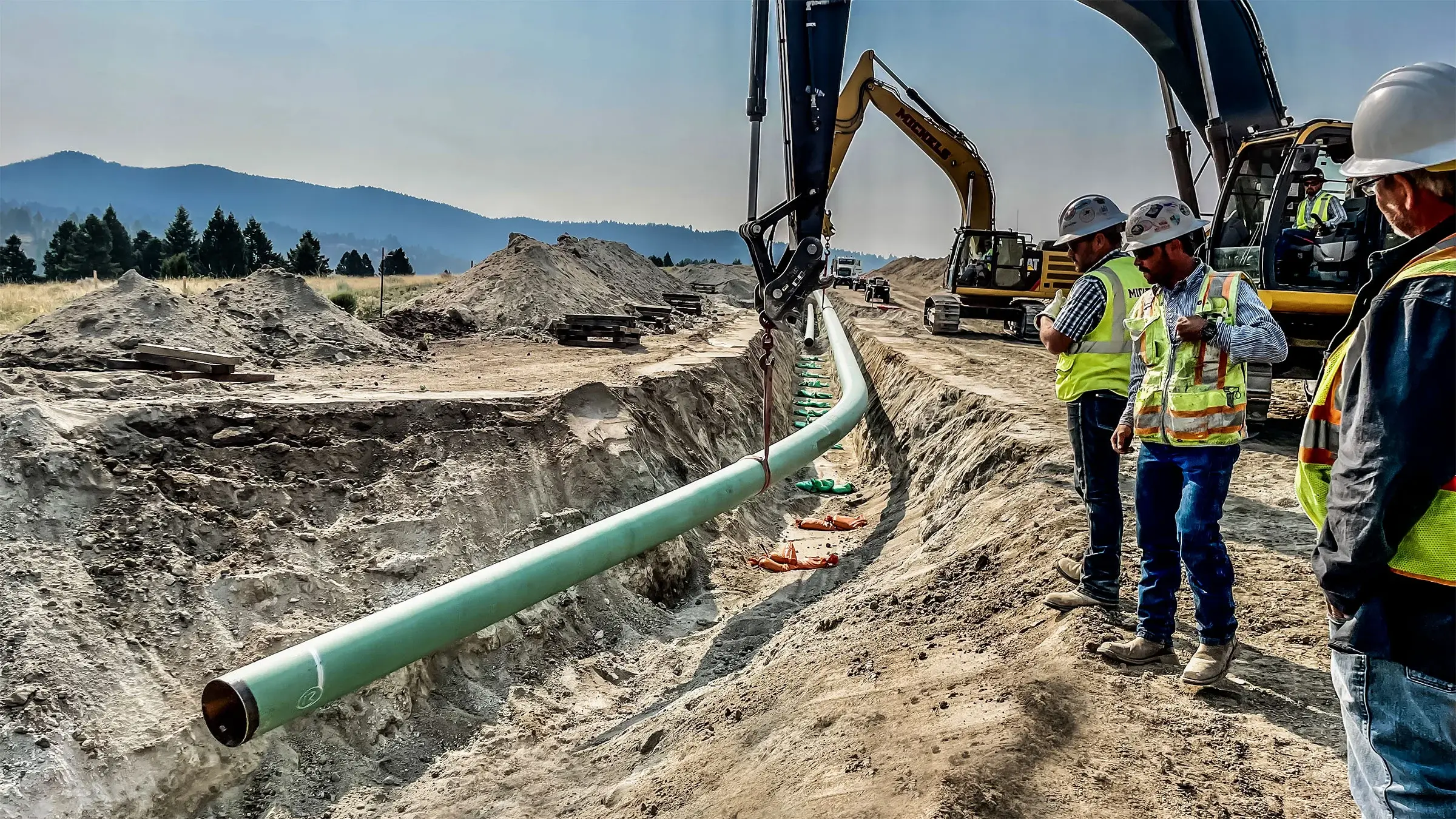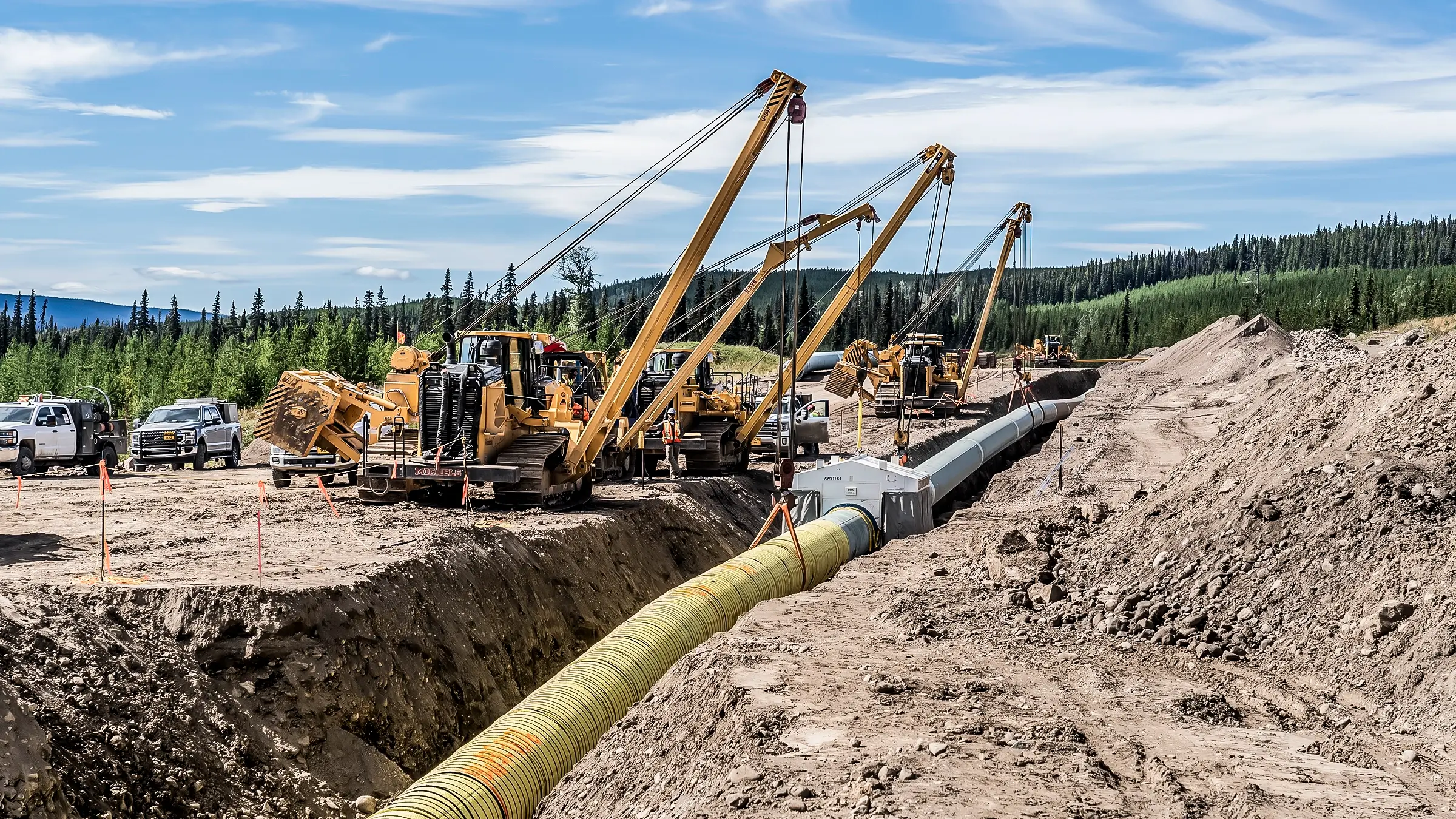Tips for Hiring the Right Provider for Creek Pipe trenching services
Wiki Article
Recognizing the Basics of Pipes Installation: What You Need to Learn About the Process
Correct pipe installation is crucial for any type of plumbing system. It requires mindful factor to consider of different aspects, consisting of product option and adherence to neighborhood regulations. A well-planned layout can avoid problems like pressure loss, while the right tools guarantee effective joining techniques. However, even experienced installers can make typical errors. Recognizing these essentials can result in a much more reliable and sturdy system, motivating a more detailed check out the essential components involved in the process.Choosing the Right Products for Pipe Installation
When considering pipe installation, the option of appropriate materials is important to making certain sturdiness and performance. Various materials are readily available, each offering unique advantages and factors to consider. For instance, PVC pipes are light-weight, immune to corrosion, and affordable, making them ideal for household plumbing. Alternatively, copper pipes, understood for their longevity and capability to withstand heats, are often liked for heating systems.Additionally, galvanized steel pipes give stamina and toughness, appropriate for durable applications, although they are susceptible to corrosion over time.For underground installations, polyethylene pipes are favored as a result of their adaptability and resistance to anxiety splitting. Appropriate product option depends upon the specific demands of the task, including stress ratings, temperature level variants, and the chemical nature of the fluids being transported - Creek Pipe Midland. Inevitably, informed choices relating to pipe materials contribute considerably to the total success and longevity of plumbing systemsComprehending Local Building Ordinance and Rules
How can recognizing local building ordinance and laws impact pipe installation? Familiarity with these codes is crucial for making sure that pipe setups are safe, compliant, and efficient. Regional building ordinance outline particular demands concerning products, installation methods, and precaution, which have to be abided by to avoid possible lawful problems and costly fines.Failure to abide can cause assessments being failed, hold-ups in job completion, or perhaps mandated removal of incorrectly set up pipelines. Furthermore, understanding zoning regulations and guidelines can influence the kind of materials allowed, along with the techniques used for installation.Contractors and homeowners alike need to invest time in examining regional guidelines before beginning any kind of installation project. This aggressive strategy not just promotes safety and security yet additionally enhances the total high quality and longevity of the pipes system, eventually promoting long-lasting capability and satisfaction.Planning Your Pipe Format and Design
Correct planning of pipe design and design is necessary for accomplishing a reliable pipes system. This process begins with assessing the certain demands of the room, taking into consideration the place of fixtures and devices. Accurate measurements guarantee that pipes are effectively routed, reducing bends and turns that can result in press loss.Consideration of the circulation prices and the kinds of materials used is important, as various products have differing resilience and compatibility with plumbing systems. Additionally, the designer ought to account for future growths or alterations to the layout, enabling flexibility in case of renovations.Efficient drainage and ventilation are additionally substantial components of the design, as they prevent clogs and guarantee proper waste removal. Finally, collaboration with regional building regulations ensures compliance and safety, which is critical in any type of pipes installation task.Crucial Tools and Devices for Installation
Effective pipe installation pivots on having the right devices and equipment at hand. Essential devices include pipe cutters for clean cuts, wrenches for tightening up installations, and pliers for grasping and turning pipelines. Furthermore, a level warranties pipelines are mounted uniformly, while a determining tape aids in achieving precise lengths.For particular products, a welding torch may be essential for copper pipes, while a PVC cutter is essential for plastic alternatives. Safety equipment, such as gloves and safety glasses, secures installers from prospective dangers during the process.A pipe bender can be specifically valuable for developing smooth curves without endangering integrity, while a torque wrench assurances that links are secured to the maker's specifications.Having these devices conveniently offered not just facilitates a smoother installation procedure but additionally contributes to the general sturdiness and capability of the plumbing system. Correct tools is critical in achieving lasting results.crawler loader
Methods for Correct Pipe Signing Up With and Sealing
Accomplishing a protected and leak-free connection in between pipelines needs cautious attention to signing up with and securing methods. Various techniques exist, each suited to various pipe products and applications (Creek Pipe pipeline construction). As an example, welding is commonly employed for steel pipes, making sure robust links through warmth fusion. On the other hand, plastic pipelines benefit from solvent cement or fusion welding, developing solid, permanent bonds.Threaded links prevail in both steel and plastic piping, requiring exact alignment and the use of proper sealers, such as Teflon tape or pipe dope, to stop leakages. Compression installations offer one more option, where mechanical stress safeguards the pipes together, making them quickly disassembled for maintenance.Regardless of the approach picked, proper preparation is crucial. This includes cleaning pipe ends and ensuring they are devoid of particles. Carrying out these strategies vigilantly will improve the durability and dependability of the pipe system, inevitably adding to its reliable efficiencyUsual Blunders to Stay Clear Of During Installation
During pipe installation, preventing typical errors is necessary for making certain a reliable and effective system. One constant mistake is failing to measure and reduce pipelines properly, which can bring about inappropriate installations and leaks. Furthermore, overlooking to check the compatibility of materials can cause deterioration or other damage over time. Improperly safeguarding joints and links can likewise produce powerlessness in the system, causing possible failures.Another usual error is neglecting the significance of slope and drainage; pipelines have to be mounted at the proper angle to promote correct flow. Insufficient assistance for pipelines can bring about sagging and stress and anxiety, influencing the honesty find out here now of the system. Inevitably, ignoring local codes and regulations can lead to expensive rework and security risks. By knowing these challenges, installers can greatly enhance the sturdiness and performance of pipe systems.Maintenance Tips for Durable Pipe Systems
To guarantee the durability of pipe systems, normal inspections and cleaning are important techniques. These measures assist identify prospective problems prior to they intensify into significant troubles. Furthermore, employing appropriate insulation strategies can additionally shield pipelines from temperature fluctuations and environmental aspects.Normal Examinations and Cleaning
Routine examinations and cleaning are vital for maintaining the durability and performance of pipe systems. Routinely taking a look at pipelines for indicators of deterioration, leakages, or clogs can aid identify prospective problems prior to they rise right into pricey repairs. Cleaning pipelines occasionally removes buildup that can restrict circulation and advertise deterioration. It is advisable to schedule inspections at least yearly, but much more frequent checks may be necessary in high-usage environments. Utilizing professional services for detailed cleaning guarantees that all particles is successfully removed. In addition, keeping documents of inspections and maintenance activities aids in tracking the system's health over time - Creek Pipe pipeline construction. By prioritizing these practices, homeowner can improve the dependability and life expectancy of their pipe systemsProper Insulation Methods
Efficient insulation strategies play an important role in maintaining the performance and long life of pipe systems. Correct insulation lessens warmth loss in warm water pipes and prevents cold in chilly water pipes, considerably lowering power prices and prospective damages. Typical materials made use of for insulation consist of fiberglass, foam, and rubber, each offering varying levels of thermal resistance. It is crucial to guarantee that insulation is applied evenly, covering all exposed locations without voids. Furthermore, safeguarding insulation with suitable bolts aids maintain its setting and performance over time. Routine inspections ought to be performed to identify damage, guaranteeing timely substitutes. By implementing these methods, pipe systems can run efficiently and have a prolonged solution life, ultimately profiting both the setting and the property owner.
Often Asked Questions
Exactly how Do I Determine the Appropriate Pipe Size for My Project?
Determining the suitable pipe size includes examining the job's circulation demands, stress specs, and the sort of liquid being transferred. Consulting style requirements and carrying out computations assurances excellent efficiency and effectiveness in the installation process.What Are the Environmental Effects of Different Pipe Products?

Can I Install Pipes Myself or Should I Hire a Professional?
The inquiry of whether to mount pipelines separately or hire a professional frequently depends on the have a peek here individual's skill degree and task intricacy. A specialist might assure conformity with policies and decrease prospective long-term problems.
How Much Time Can I Expect My Pipe Installation to Last?
The durability of pipe installation varies considerably, usually lasting 20 to 100 years, relying on materials, installation quality, and maintenance. Regular examinations and proper care can improve toughness and stop premature failings.
What Are the Signs of a Failing Pipe System?
Signs of a failing pipe system include frequent leaks, unusual water stress modifications, tarnished water, mold growth, and relentless wetness. Home owners must monitor these signs to prevent expensive damage and warranty prompt repairs are made.Report this wiki page